Dry Fly Tactics

Streams | |||
Up and Across Presentation | |||
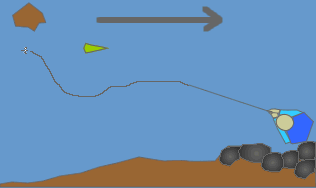 Within dry fly tactics, the Up and Across Presentation is probably the best to present a dry fly within a stream. The angled cast will keep the line and leader to the side out of the vision of the fish. The main problem will be drag, especially, if the stream has a number of different current speeds in the water between the fly fisherman and the fly. Some of the drag issues can be addressed through mending the line or a Reach Cast but often a better solution is to use a Curve Cast which offers some upstream sag to the line. The sag will be carried downstream and will provide some extra time before drag sets in on the presentation. Try to keep your cast short. The less line on the water, the less drag you will encounter. Try to keep your drifts short. It’s better to cover a small piece of water rather than the entire stream with one cast. | |||
Down and Across Presentation | |||
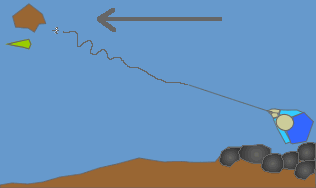 Another dry fly tactic is the Down and Across Presentation. Position yourself upstream and across from the rising trout. Use a Reach Cast. Aim a false cast downstream to the point where you want the fly to land. At the end of the presentation stroke, move the rod sharply upstream. The fly will land where you aimed and be downstream from the fly line. Follow the fly with the rod tip as it drifts downstream. For more slack, try a reach cast with an S-curve cast applied at the end. Conflicting current speeds may require you to mend line or hold the rod high to get fly line off the water to avoid drag. This presentation works very well with emerger patterns since the cast downstream will allow the fly to sink and a subsequent lifting of the rod tip will entice the fly to rise and even skitter over the surface. | |||
Direct Upstream Presentation | |||
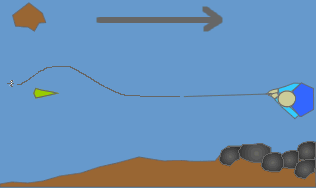 Dry fly tactics include the Direct Upstream Presentation. This is a difficult presentation since the fly line will often spook the fish as it passes by with the current. The good thing is that you don’t have to worry about drag. If this is your only option, try an overhead cast to place the fly about 2-3 feet upstream of the fish. In this situation, the fly line will be behind the fish and the leader will be less intrusive. Another method to use is the Curve Cast. This cast will allow you to reach the fish with your fly without having the fly line or the leader interfering with the presentation. Be aware, however that this cast might cause additional drag problems within streams that have variable currents. Regardless of which cast you make, it is important to manage your slack line by stripping it back behind your forefinger on the rod. You will need to minimize the slack in order to properly set the hook in case of a strike. | |||
Direct Downstream Presentation | |||
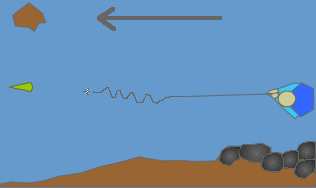 A Direct Down downstream presentation can be very effective on spring creeks and slow moving streams. To execute this dry fly tactic, face downstream and cast straight downstream from you. Use a puddle or parachute cast. This will give you some slack line. Additional slack can be gained by wiggling the rod throughout the cast. Try to follow the fly downstream with the rod tip. Raise the rod tip to minimize the slack or lower the rod tip to apply more slack as needed. The main thing you try to accomplish is to minimize enough slack that you can set the hook quickly. The fly is directly below you when the fish strikes it, so it is common to miss the strike by trying to set the hook too quickly. You have too find the right timing for this presentation to work well. | |||
Skating Presentation | |||
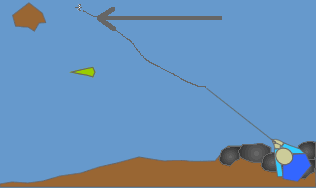 The Skating presentation works well with heavily hackled dry flies that have good buoyancy. The purpose of this presentation is to imitate an insect getting blown over the surface of the stream by the wind. Cast downstream and across. Mend the line upstream and let the fly swing across the current. With the presentation, drag is your friend. Try raising your rod tip, this enhance the skittering movement and will help any fly surface that is caught within the surface film. Try this presentation with Elk Hair Caddis, Wulff flies, and Stimulators. | |||
Minor Tactics | |||
Ed Engle wrote an article in Summer 2003 of Flyfishing & Tying Journal regarding specific minor dry fly tactics he’s found useful within streams. They certainly apply to many of our Sierran waters.
| |||
Lakes | |||
Chuck-and-Sit | |||
There are some opportunities to use dry flies on lakes. During a Callibaetis hatch, you can use an Adams, Callibaetis Cripple, or Sparkle Dun. Hex hatches will allow for dry fly presentations at times. Also consider a Griffith’s Gnat during a midge hatch, or terrestrials that are blown onto the lake surface. Use a floating line, a long, thin leader, and as small of tippet as possible. Make an overhead cast to the area which is showing fish hitting the surface. At times, the fish will cruise an area. Try to sight these fish and cast ahead of them with the dry. | |||
